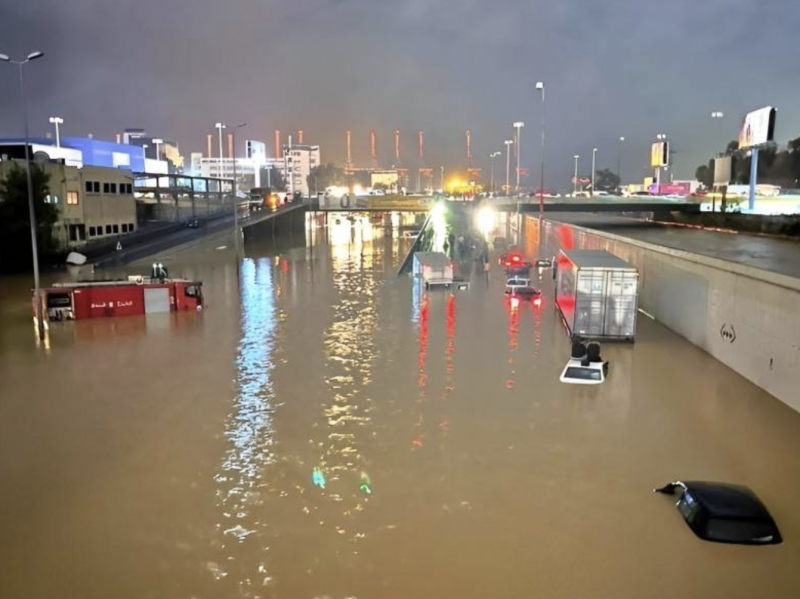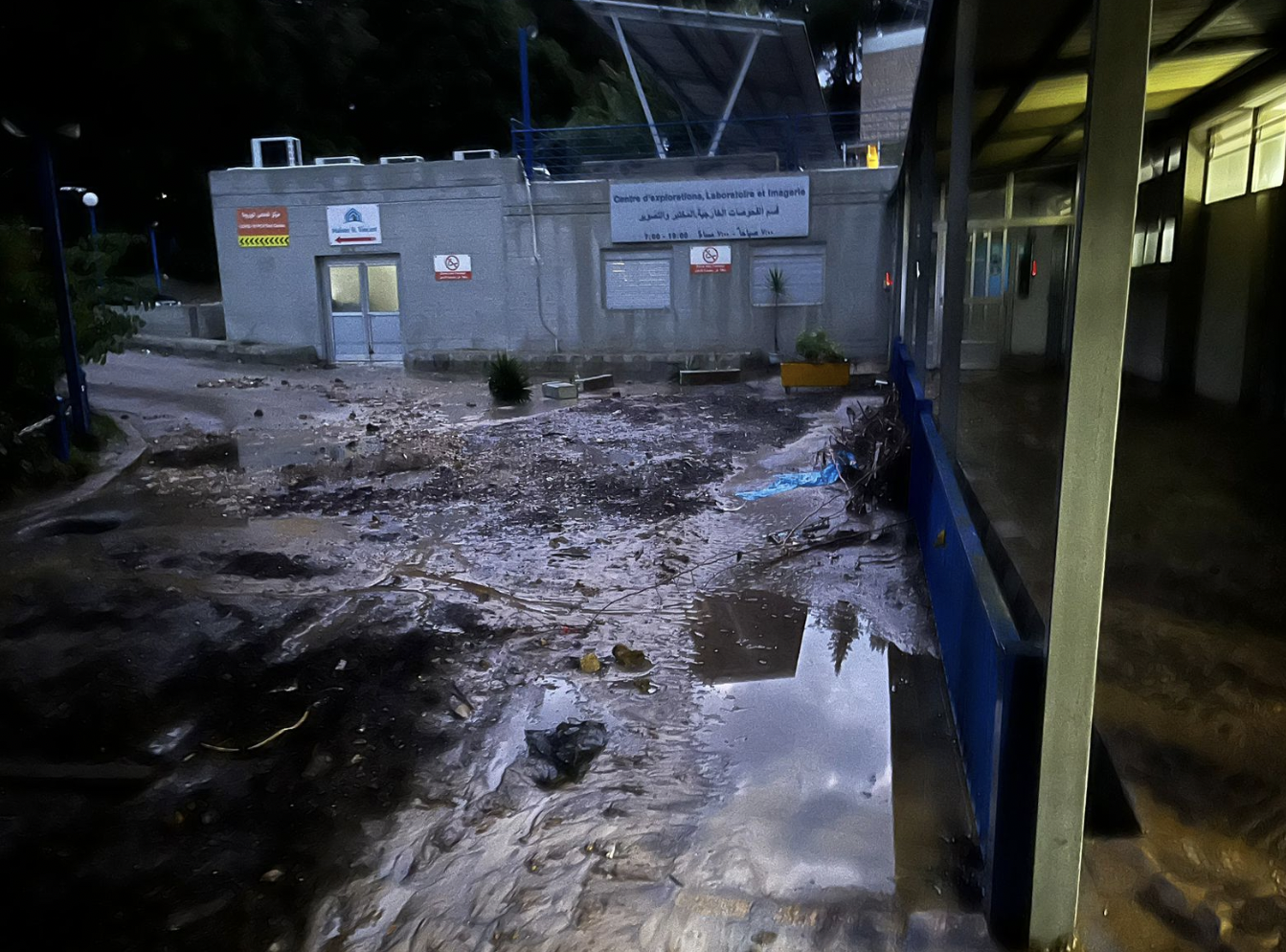
Photo of Karantina taken on Friday evening by an Internet user. (Credit: @philabouzeid's X account)
Four Syrian refugee children died in North Lebanon, security sources told our correspondent in the region, as a new episode of torrential rain, like the one ten days ago, caused major damage and disruption across the country in less than 48 hours. The passengers of two school buses had to be rescued in Kesrouan by the Civil Defense.
Outgoing Prime Minister Najib Mikati held several meetings to monitor the situation, and Outgoing Minister of Public Works and Transport Ali Hamiyeh on Friday evening blamed the Ministry of Energy and Water, referencing a stretch of road in Karantina near the Beirut port. In a statement, the outgoing Minister of Energy said that more than 100 millimeters of rainfall had been recorded in just a few hours, which the country's current infrastructures could not withstand, "whatever" their initial capacities.
The floods also caused major traffic jams on the main roads along the coast. Rain and fog severely reduced visibility in the lower mountains, and some roads were blocked by snow at higher altitudes.
Rescue missions
Until the rain eased off mid-day on Saturday, members of the Civil Defense team carried out a series of at times spectacular rescue missions to unblock roads, rescue motorists or evacuate water from flooded buildings. This avalanche of missions was listed by the institution in a press release published on Saturday, some of which were filmed and posted on social networks by Internet users.
One of these videos showed a fire truck struggling to move along the Karantina road in the port of Beirut, where the water level had risen to well over a meter, engulfing vehicles that were not able to get out of the way in time.
In a message posted on X (formerly Twitter) showing images of the Beirut River, the Minister of Public Works said it was clear that the water "was not draining towards the sea because the stormwater drainage network had not been cleaned." He said that cleaning up the infrastructure adjacent to the watercourse was the responsibility of the Ministry of Energy and Water, in accordance with law 221 of May 29, 2000 and its amendments. He reiterated his comment in an interview with LBCI. The Minister of Energy rejected all the allegations made against him. Other watercourses in Lebanon have burst their banks, including the Ghadir River near Beirut International Airport (BIA).
The maritime road linking Beirut to Jounieh, the tunnel on the road linking the capital to its airport, and the Mansourieh ascent (Metn district) from the Mkalles traffic circle on the outskirts of Beirut are among the other severely flooded stretches of road identified by the Civil Defense and motorists' testimonies that we collected. The roads running from the coast to the heights were affected, especially those where certain sections of the sewage and rainwater drainage network ended up overflowing or bursting under the pressure of the water.
In Nahr al-Kalb, at the junction between Kesrouan and Metn, the Civil Defense department claims to have helped evacuate 64 pupils trapped in two buses by the rising waters. One of them had to be hospitalized in the aftermath of the operation.
In North Lebanon, on the outskirts of Mizyara (Zgharta district), a family of Syrian refugees was trapped by a torrent of mud that buried one of the rooms in the building where they had taken up residence, according to security sources quoted by our correspondent in the region. Four children died and three other people, including two adults, survived.
The Civil Defense Service evacuated several people from their flooded homes between Friday evening and Saturday. It also intervened to unblock roads, notably in the Baabda district (Deir al-Harf and Wadi Shahrur). Arriving on the scene at 3 a.m., emergency services were still working at Sacre Coeur hospital, part of which was flooded, according to the same press release.

The Sacre Coeur hospital compound in Hazmieh.
According to a hospital spokesman, the emergency room, administration offices and "the technical platform," which includes the radiology department and laboratories, were flooded, and the damage is "considerable." "There is an evacuation network that runs close to the hospital. Under the pressure of the rainfall, a wall burst and the water rushed in," said the spokesman, before pointing out that the hospital's management had for years called on the region's municipalities to carry out work to divert the pipe in question.
According to our correspondent, emergency services were also mobilized north of Tripoli (North Lebanon), in an attempt to drain the water flooding a building in the locality of Abdeh.
This article was originally published in L'Orient-Le Jour.